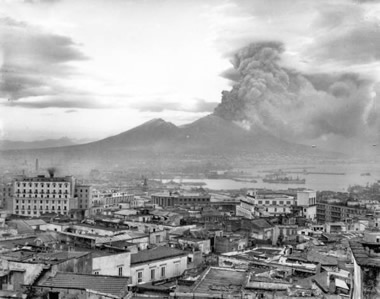Mount Vesuvius is a volcano that formed inside another
volcano. The original volcano was Mount Somma, and Mount Vesuvius formed inside
the caldera. The volcano is formed at the subduction zone created by the African plate as it goes under the Eurasian plate.
The last eruption of Mount Vesuvius was in 1944, but its most
famous eruption was 79 A.D. This is when Pompeii and Herculaneum. It is
considered an active volcano and it is believed it will erupt again. Mount Vesuvius
erupts explosively. Age and eruptions are detected by collecting rocks and dating
them. They sometimes drill to collect older rock.
Mount Vesuvius is an especially dangerous volcano. It is surrounded
by densely populated areas. It has Plinian eruptions that cause huge ashfalls
and pyroclastic lava flows. This is what doomed Pompeii and Herculaneum.
Pompeii is a unique area where the ash froze the town and its people in time.
Vesuvius currently only has minor seismic activity and
outgassing from its fumaroles.
References
Mount vesuvius, italy: Map, facts, eruption pictures, pompeii. (n.d.). Retrieved July 29, 2019, from https://geology.com/volcanoes/vesuvius/
What’s the most recent eruption of Vesuvius and will it erupt again? | Volcano World | Oregon State University. (n.d.). Retrieved July 29, 2019, from http://volcano.oregonstate.edu/what%E2%80%99s-most-recent-eruption-vesuvius-and-will-it-erupt-again
Vesuvius volcano. (n.d.). Retrieved July 29, 2019, from http://www.gso.uri.edu/vesuvius/Vesuvius/Vesu.html



No comments:
Post a Comment